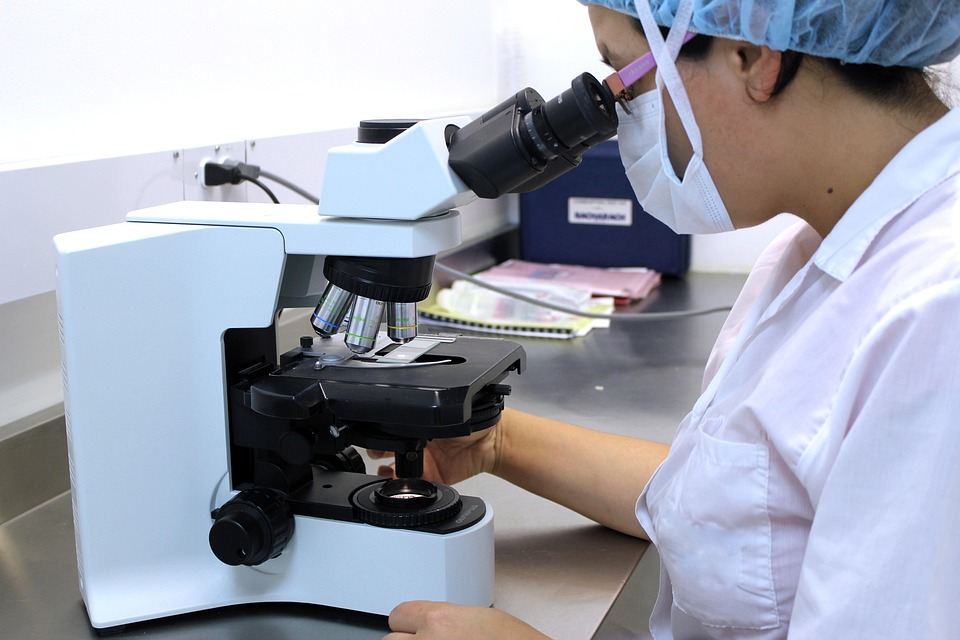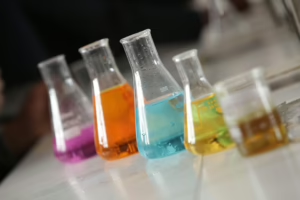Chemistry Conundrums: Debunking Myths and Misconceptions about Chemicals
Chemistry is often perceived as an esoteric field, replete with complex terminologies and intricate theories. As a result, many misconceptions and myths have emerged over the years, clouding public understanding and appreciation of this vital science. This article delves into several key myths about chemicals and chemistry, providing clarity through scientific facts and rationale.
1. All Chemicals are Dangerous
One of the most pervasive myths is that all chemicals are inherently harmful. This misconception is primarily rooted in the media’s portrayal of toxic substances and the sensationalism surrounding chemical hazards. In reality, a "chemical" can refer to a vast array of substances, many of which are essential for life.
Understanding Chemicals
A chemical is any substance consisting of matter, including elements and compounds. Water (H₂O), for instance, is a chemical, yet it is vital for human survival. Chemicals are also present in various natural forms, including the air we breathe, the food we consume, and even our own bodies.
Myth vs. Reality
- Myth: All chemicals are toxic and pose health risks.
- Reality: While some chemicals are indeed hazardous, countless others are non-toxic and beneficial. The toxicity of any chemical often depends on its concentration, the method of exposure, and the individual’s susceptibility.
The Importance of Context
Determining the safety of a chemical often requires understanding the context in which it is used. For example, oxygen is crucial for life, but in high concentrations, it can be harmful. Similarly, table salt (sodium chloride) is essential for bodily functions but can be lethal in excessive amounts.
2. Organic Chemicals are Safe, Inorganic Chemicals are Not
Another common misconception is that organic chemicals, typically derived from living organisms, are always safe, while inorganic chemicals are deemed unsafe. While the term "organic" often carries positive connotations, it is important to recognize that both organics and inorganics encompass a wide range of substances with varying properties.
What Does "Organic" Really Mean?
The definition of organic in chemistry is based on the presence of carbon atoms in a molecule. This classification includes many substances that can be harmful. For example, formaldehyde is an organic compound that is known to be toxic, whereas inorganic compounds like sodium bicarbonate (baking soda) are commonly used in households and are generally regarded as safe.
Debunking the Myth
- Myth: Organic chemicals are safe; inorganic chemicals are unsafe.
- Reality: The safety of any chemical, regardless of its classification, depends on its specific properties, concentration, and usage.
3. pH Levels are Not Important
Many people think that pH levels are irrelevant outside of specific scientific contexts. However, pH plays a crucial role in various daily applications, from gardening to cooking to health care.
The pH Scale
The pH scale ranges from 0 to 14, with lower values indicating acidity and higher values indicating alkalinity. A pH of 7 is considered neutral. The human body functions optimally within a narrow pH range, and deviations can lead to significant health problems.
Real-World Implications
- Myth: pH levels don’t matter outside of a laboratory setting.
- Reality: pH is vital in numerous contexts. For instance, in agriculture, soil pH affects nutrient availability, while in culinary contexts, food pH can influence taste, texture, and safety.
4. Chemical Reactions are Always Explosive
Hollywood has popularized the image of dramatic, explosive chemical reactions, leading many to believe that scientific experiments are inherently dangerous. While some reactions can be vigorous or hazardous, the majority of chemical reactions are straightforward and safe when conducted under appropriate conditions.
The Nature of Chemical Reactions
Chemical reactions involve the rearrangement of atoms to form new substances. Most reactions are mild and safe, such as the rusting of iron or the fermentation of sugar into alcohol.
Reassessing the Myth
- Myth: All chemical reactions result in explosions or dangerous outcomes.
- Reality: While certain reactions can be dangerous, many everyday chemical processes occur without any dramatic effects.
5. Natural Chemicals are Better than Synthetic Ones
The notion that "natural" chemicals (those sourced from nature) are superior to their synthetic counterparts is misleading. This myth often neglects the complexities of chemical structures and the safety profiles of various substances.
The Debate on Natural vs. Synthetic
Natural does not inherently mean safe or effective. For instance, certain plants produce poisons (e.g., hemlock) that are far more dangerous than many synthetic chemicals. Conversely, many synthetic chemicals undergo rigorous testing and regulation, ensuring their safety for public use.
Clarity on the Issue
- Myth: Natural chemicals are always better than synthetic ones.
- Reality: The safety and efficacy of a chemical—whether natural or synthetic—depend on its specific properties and intended use.
6. Carbon Dioxide is Just a Pollutant
With climate change at the forefront of global discussions, carbon dioxide (CO₂) is often branded as a pollutant. While it is true that excessive CO₂ contributes to global warming, it’s essential to appreciate the role this gas plays in natural processes and its relation to life on Earth.
The Role of CO₂ in Nature
CO₂ is a critical component of photosynthesis, allowing plants to convert sunlight into the energy needed for growth. It exists in the atmosphere as part of a delicate balance that supports life.
Balancing the Narrative
- Myth: Carbon dioxide is solely a pollutant.
- Reality: CO₂ is integral to the Earth’s ecosystem, and its role as a greenhouse gas must be balanced with its necessity for plant life.
7. Chemical Labels are Just Scare Tactics
Many individuals ignore chemical labels and safety data sheets, believing they are merely designed to frighten consumers. However, these labels are there to ensure safety and informed decision-making.
The Significance of Chemical Labels
Chemical labels provide critical information regarding the potential hazards, recommended handling procedures, and first-aid measures related to chemicals. Understanding these labels can significantly reduce the risk of accidents.
Importance of Awareness
- Myth: Chemical labels are just scare tactics.
- Reality: Labels are essential for ensuring safety and must be taken seriously to prevent mishaps.
8. Only Scientists Need to Study Chemistry
The belief that chemistry is only relevant to scientists and professionals in the field undermines the importance of chemistry in everyday life. Understanding basic chemistry concepts can enhance decision-making and improve everyday interactions with the world.
The Ubiquity of Chemistry
Chemistry contributes to diverse fields such as medicine, environmental science, cooking, and even art. A fundamental comprehension of chemistry can be invaluable in making informed decisions about health, sustainability, and safety.
Why Everyone Should Learn Chemistry
- Myth: Only scientists need to know about chemistry.
- Reality: Chemistry is intricately woven into daily life, and knowing the basics can empower individuals to make informed choices.
9. All Chemicals Can be Made Safe
The idea that all chemical substances can be rendered completely safe is a oversimplified view. While many chemicals can be managed effectively through proper handling and usage, some substances inherently possess risks that cannot be entirely eliminated.
The Challenge of Chemical Safety
While regulations and safety measures can mitigate risks, some chemicals are fundamentally dangerous due to their inherent properties. Understanding and recognizing these risks is vital for promoting safety.
The Nuance of Safety
- Myth: All chemicals can be made safe.
- Reality: Some chemicals carry inherent risks that need to be acknowledged and managed rather than entirely eliminated.
10. The Chemical Industry is Always to Blame for Environmental Issues
While the chemical industry has undoubtedly contributed to environmental problems, it is reductive to place the blame solely on this sector. Many factors contribute to ecological harm, and a more holistic understanding is essential for problem-solving.
Understanding the Impact
While certain practices within the chemical industry have led to pollution and environmental degradation, various sectors, including agriculture, transportation, and manufacturing, also play critical roles. Taking a comprehensive approach can lead to more effective solutions.
Rethinking Accountability
- Myth: The chemical industry is solely responsible for environmental issues.
- Reality: Environmental challenges are complex and multifaceted, requiring collaboration and responsibility across various industries and societal sectors.
Conclusion
Chemistry is a fundamental aspect of our existence, influencing everything from health and safety to environmental sustainability. Addressing myths and misconceptions surrounding chemicals can foster a deeper appreciation and understanding of this science.
By enlightening individuals about the nature of chemicals, their roles in daily life, and the importance of responsible usage and awareness, we can empower society to engage with chemistry thoughtfully and positively. As we continue to confront contemporary challenges, understanding the complexities and nuances of chemistry will be more crucial than ever.
[Modern_footnote_source]























Add Comment